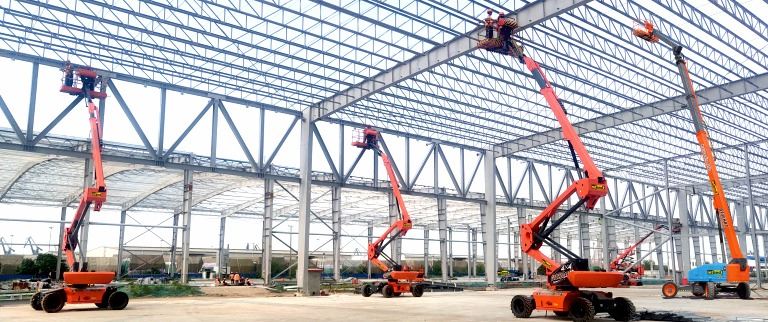December 11,2025
Boom Lifts: Rent or Buy to Safely Tackle Those Out-of-Reach Tasks

Introduction:
The role of boom lifts is irreplaceable in construction, maintenance, and various industries. These versatile machines, available for sale or rent, provide a solution to reach elevated work areas with enhanced safety and efficiency. Whether you're considering a purchase or a temporary renting solution, understanding the dynamics of boom lifts is crucial. This comprehensive guide will delve into the specifics of boom lifts, their applications across industries, operational aspects, and safety measures. Let's explore the possibilities this aerial equipment has to offer.
Understanding Boom Lifts
A boom lift, or aerial boom lift, is a lifting platform mounted on a hydraulic arm. This machinery elevates workers, tools, and materials to various heights, making it an essential asset in construction, maintenance, and other industries.
- Articulating Boom Lifts: These lifts feature jointed arms, providing flexibility to maneuver around obstacles, making them ideal for tasks requiring precise positioning.
- Telescopic Boom Lifts: Known for their straight, extendable arms, telescopic boom lifts offer impressive reach at a high height. They are suitable for straightforward vertical extensions without complex maneuvering.
- Trailer-Mounted Boom Lifts: These lifts are easily transportable. They are mounted on a trailer and can be towed behind a vehicle. They are convenient for projects involving frequent relocations.
Industries Benefiting from Boom Lifts
Boom lifts find applications in various industries, including:
- Construction: Facilitating work at height for painting, facade installation, roofing, installation and more.
- Maintenance: Ideal for repairing and maintaining structures, lighting, or utility lines.
- Film and Entertainment: Essential for setting up lights, cameras, and equipment at elevated angles on film sets.
- Manufacturing: Access hard to access area over obstacles with ease and efficiency.
- Agriculture: Used for tasks like pruning trees or harvesting at elevated levels.
Operational Insights
Operating a boom lift requires proper training and adherence to safety guidelines. The process typically involves:
- Start-Up: Turn on the machine following the manufacturer's instructions.
- Control Activation: Familiarize yourself with the control panel, which includes levers for boom movement and platform rotation.
- Platform Entry: Safely enter the platform using the provided access points.
- Boom Movement: Use the controls to articulate or extend the boom as needed.
- Platform Rotation: Adjust the platform rotation to achieve the desired work angle.
- Shut Down: After completing the task, follow the shutdown procedure outlined in the manual.
Renting vs. Purchasing Boom Lifts
Both options - renting and purchasing - come with their own set of advantages:
Boom Lift Rental
- Cost-Effective: Ideal for short-term projects, as you pay only for the duration of use.
- Maintenance: Rental companies typically handle maintenance, reducing downtime.
- Variety: Access a range of boom lift models for specific tasks.
Boom Lift for Sale
- Long-Term Investment: Suitable for businesses with consistent, long-term need for elevated work platforms.
- Customization: Purchasing allows for customization based on specific project requirements.
- Asset Ownership: The boom lift becomes a valuable asset for the business.
Logistics of Boom Lifts
Transporting a boom lift requires careful planning and adherence to safety regulations:
- Trailer-Mounted Boom Lifts: Towable behind a vehicle, making them easy to transport to different job sites.
- Truck Transport: Larger boom lifts may require transport via a flatbed truck, necessitating proper securing and adherence to road regulations.
Safety Precautions
Safety is paramount when operating boom lifts. Ensure the following precautions are in place:
- Training: Only trained and certified operators should use boom lifts.
- Inspection: Regularly inspect the lift for any wear, damage, or malfunction.
- Weather Conditions: Avoid operating in adverse weather conditions like high winds or storms.
- Fall Protection: Use harnesses and other fall protection equipment as necessary.
- Stability: Ensure the lift is on stable ground and the brakes are engaged before operation.
Conclusion
Boom lifts, available for sale or rent, have revolutionized work at elevated heights across various industries. Understanding the types, applications, and safety considerations is paramount for making informed decisions. Whether you invest in a boom lift for long-term use or opt for the flexibility of rentals, these machines undoubtedly elevate the efficiency and safety of your projects. Consider your specific project requirements, and let a boom lift be the key to unlocking new heights in your endeavors.